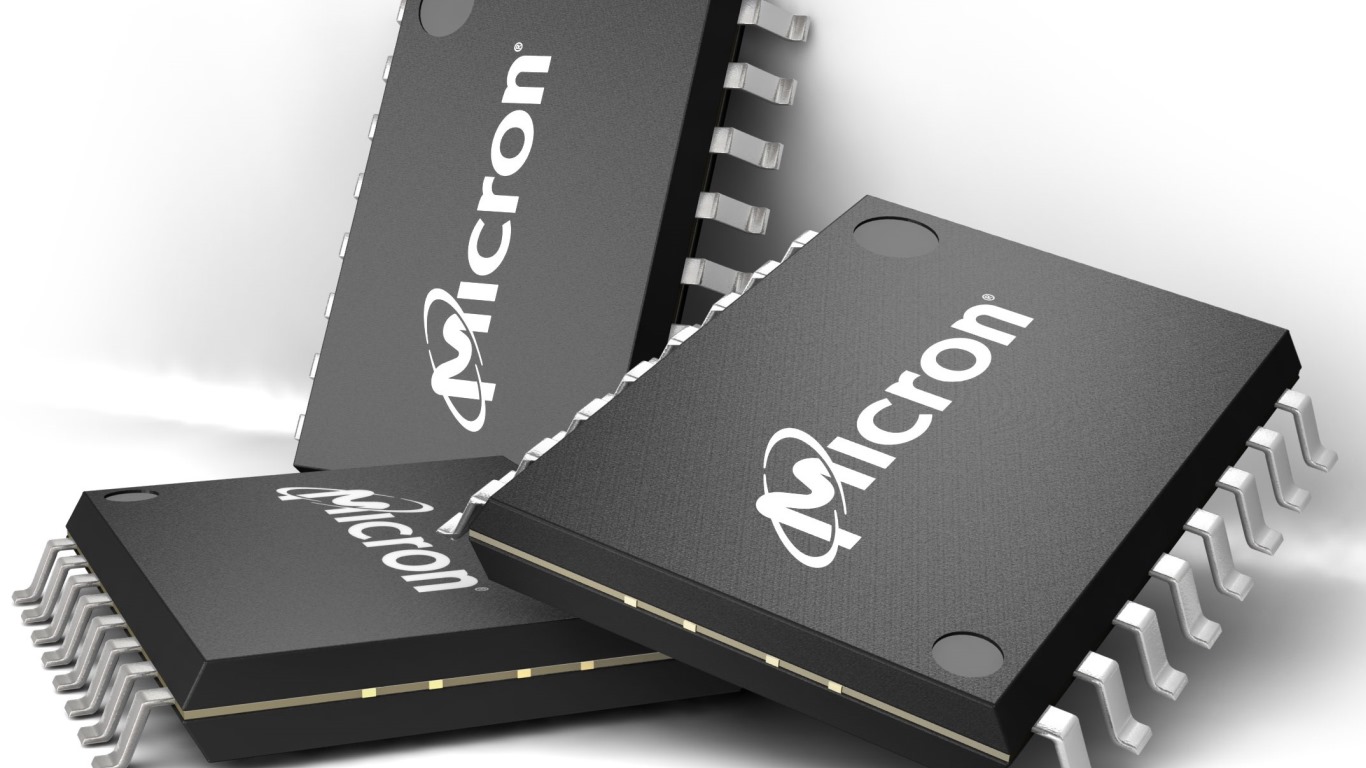Technology
Will a New Advanced Memory Chip Help Micron Stock Keep Its Momentum?

Published:

Despite a share price drop of more than 15% since the beginning of 2020, Micron Technology Inc. (NASDAQ: MU) stock currently trades more than 8% higher than it did a year ago. The semiconductor industry as a whole trades up about 6.7% for the past 12 months and down about 10% for the year to date.
The company certainly shared in a sales boost following the imposition of stay-at-home directives from many states and localities intended to slow the spread of COVID-19. School closings also helped boost sales of personal computers and laptops as millions of students get set to close the 2019-2020 school year with online classes and maybe even virtual graduation ceremonies.
U.S. businesses told workers to stay home and many have purchased computers to enable some employees to continue working from home. All those PCs and laptops include at least DRAM or NAND memory chips (or both), and Micron earns nearly two-thirds of its annual revenues from DRAM chips and about a third from NAND chips.
DRAM (dynamic random access memory) chips are used in varying numbers in virtually every desktop PC, laptop and server. NAND flash memory is used in smaller devices, like thumb drives, cameras and smartphones, where its large storage capacity and ability to write and erase data quickly is a significant benefit. Solid state drives are also big consumers of NAND flash.
For Micron, the short-term issue is whether the new work-from-home movement will put an end to the market glut in memory chips that dogged the company and its competitors last year. Corporate data centers are also expected to buy more memory chips to meet demand for bandwidth from their customers as well as their own employees.
A supply shortage already may be starting. When Samsung reported preliminary first-quarter results last week, the Korean giant said it saw a sales improvement of 5% year over year in memory chips.
Since March 26, the day after Micron reported second fiscal quarter results, seven of 12 analysts covering the company have lowered their price targets, while only one has raised its target. Shares have traded recently at more than 25% below the average price target.
On April 13, Goldman Sachs cut Micron’s rating from Buy to Neutral and lowered the chipmaker’s price target from $60 to $49. Citigroup is the only firm with a recent Sell rating on the stock. Among the recent ratings actions, Citigroup’s $35 price target and Piper Sandler’s $48 target are the lowest. Goldman’s price target is $49.
In the second quarter of its 2020 fiscal year, Micron reported $0.45 in earnings per share (EPS) and $4.80 billion in revenue, both higher than consensus estimates calling for $0.37 in EPS and $4.68 billion in revenue. Both were also well short of second-quarter 2019 results of $1.71 in EPS and $5.84 billion in revenue.
Looking ahead to the fiscal third quarter, Micron expects to see EPS in the range of $0.40 to $0.70 and revenue between $4.6 billion and $5.2 billion. Consensus estimates call for $0.53 in EPS and $4.87 billion in revenue.
At January’s Consumer Electronics Show, Micron said it intends to introduce to the market a new line of memory chips based on the new DDR5 standard (DDR stands for double data rate) late this year for servers and data centers. The DDR5 memory modules consume less power than their DDR4 predecessors while at the same time doubling bandwidth. DDR5 is not expected to make it into consumer devices (probably high-end gaming devices first) until next year.
Micron stumbled along behind Samsung and SK Hynix, another big memory chip maker, for a few years before righting the ship in the fourth quarter of 2018 when its net profit on memory chips surpassed both companies. Given the boost from sales of PCs, laptops and servers to support working from home, continued rising demand for network bandwidth, and a potential lead for its DDR technology, Micron’s only remaining problem may be that the stock market is getting impatient.
Thank you for reading! Have some feedback for us?
Contact the 24/7 Wall St. editorial team.